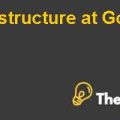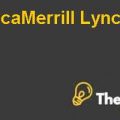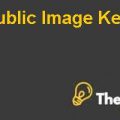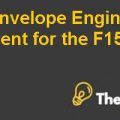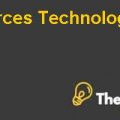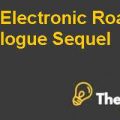
Introduction
The Breeden Security Inc. is the company that manufactures the radio equipment and other signaling device. The subsidiary of this company is located in the United States and is operated by its young members. After one year of operations, Marlene Baer, the supervisor of Breeden security was hired to run a comprehensive and a relevant examination about their costing and profit performance in the year 2008.
The Actual revenues were shocking for the corporation, having one hundred thousand units sold for the product RC1 and eight thousand for the product RC2. Personnel of the company were positive about these revenues.
While on the other hand, Marlene Baer decided to appraise her facts & figure and by editing some ideas to perceive if the anticipations that the company had at the commencement of the year were encountered.
Baer acknowledged that the developments used by the holding company on applying direct labor hours might not be the optimal way to deal with the manufacturing overhead costs that comes together and apportioning them to RC1 & RC2. But the problem arises due to the cost of allocation method. She does not know the proper allocation, additionally she do not have any idea which technique gives more appropriate knowledge about the cost and profitability.
Moreover, at the same time, Bear raised questions about the effectiveness of using direct labor for all cost basis that she acknowledged. On the other side, she clarified that it was too ambiguous and she was unaware of the company’s holdings. For the solution of all problems, the company applied both techniques of overhead allocation which were traditional overhead and Activity based costing respectively. ABC provided clearer picture rather than traditional.
Analysis
The analysis were prepared accordance to the case relevance of costing techniques. In the analysis there are many things indulge for extracting the optimal solution for the company. After observing at Baer's original analysis of the given data there are many facts that needs to be emphasized and others that need to be analyzed. The good features of her analysis are the way she shaped the cost groups and exploited activity-based costing for further benefits.
As stated formerly, she scattered 3 manufacturing overhead amounts for assembling, fabrication, packing and shipping in percentage to direct labor. She knows that there are several basis for the allocation such as machine hours and product units etc. The reason for choosing direct labor in an order that it is customized to the extra labor then all the labors are attached with labor.
Therefore she thought that, direct labor is the optimal allocation for packing & shipping. The negative point is the extra expense which will be bearable from the profit of the company. For this reason RC2 sales are not much popular. She is accepted in the right way by consuming the ABC method to control a more accurate cost.
Through analysis, the point comes in term of cost reduction, adequate cost allocation and actual picture of the organization profits. The analysis has been done in the form of questions and answers which are discussed below.
Question 1
Compute the overhead rates for Fabrication, Assembly, and Packing and Shipping using the data from Exhibits 1, 2, and 3.
Answer 1
The overhead rate is calculated on the basis of the Product unit which is more appropriate from the point of the analysis. These figures are extracted from the exhibit 2 & 3, and also depicted in the excel sheet with named as advanced managerial accounting which are annexed with this report. The overhead rate is also attached in the Appendices of this report.
The fabrication rate is 0.63 per labor, assembly is 0.53 per labor and packing & shipping is 3.5 per labor. These calculations have done on assumption of managerial accounting with the best judgmental techniques.
Question 2
Compute revised product costs for RC1 and RC2. Why did the product costs change?
Answer 2
After the calculation of overhead rate, she was able to decide the ABC per-unit product cost by doing the calculation which are given in this paragraph. Parts cost is calculated through dividing the no. of unit with respect to the total parts cost. The calculation has done in separate product like RC1 and RC2...................
This is just a sample partial case solution. Please place the order on the website to order your own originally done case solution.
Breeden Electronics division of the U.S. launch of the German company. It plans to launch two products, both electronic signaling devices. Herman Klein, president, asked his controller, Marlene Baer, to calculate the number of break-even sales, as they assess the level of sales needed to meet profit targets set by the parent company. Baer should spend a few break-even analysis, and consider the impact on profits if production exceeds sales. This is the first in a series of two cases that can be used to study the evolution of the system cost. The main issues of the two cases are as follows: in the case, the company uses traditional costing system. Key issues related to the break-even analysis and stockpiling effect on profits. Case B (UV1779) introduces the use of activity-based costing system cost allocation, so the company can evaluate both product and customer profitability. These two cases can be used in two classes, or together in one class. "Hide
by Luann J. Lynch, Allen Brandt Source: Darden School of Business 3 pages. Publication Date: June 19, 2009. Prod. #: UV1778-PDF-ENG


